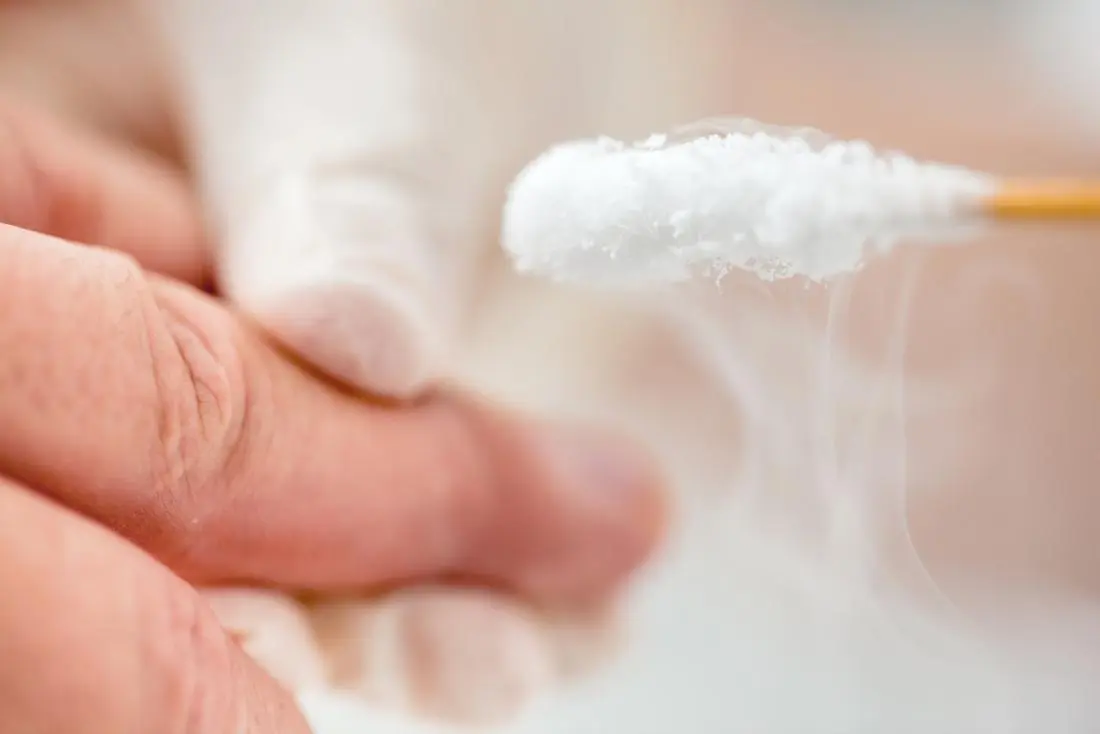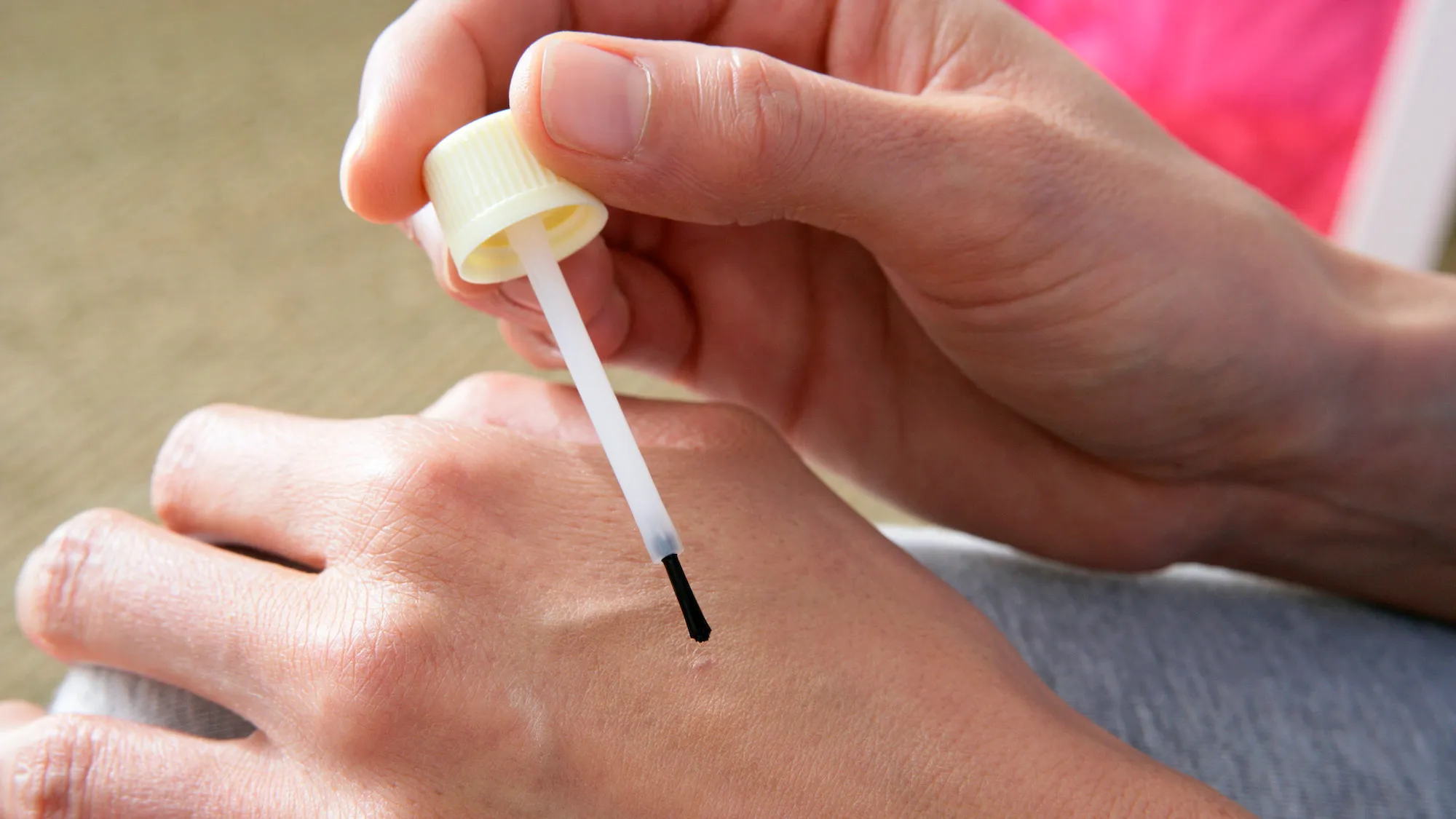Stage 1 of the Salicylic Acid Wart Removal Process: Inflammation and Redness Whether salicylic acid or cryotherapy are applied, redness and swelling are frequently visible during the initial phase of wart removal. 2 Becomes Dry And Black. Your wart will begin to discolour and appear rather parched. At this moment, the virus-infected skin begins to degrade. Sloughing 3
The progression of a wart’s removal from salicylic acid depends on the wart’s health. The phases of wart eradication include the initial symptom and the subsequent stages. This article will describe the symptoms and treatment choices best suited for each stage. It will also cover the Aftercare regimen and pain management. Salicylic acid will dissolve the infected skin, but be careful as it can irritate the undamaged skin.

Symptoms of a wart falling off salicylic acid
The first step to cure a wart with salicylic acid is to apply it to the affected region. This is commonly done after a shower or bath to assist the acid in permeating the skin. Another procedure is to soak the wart in warm water for five minutes. Some people cover the wart with duct tape; however, this treatment has not been shown helpful and is not ideal for persons with sensitive skin.
The Stages of a Wart Falling Off Saloxylic Acid
Another method is to put duct tape directly on the wart. While this can be uncomfortable, this procedure removes dead skin and virus particles. Many people choose to apply salicylic acid before covering the wart with duct tape. After administering the acid, the wart should fall out within five to six days. However, if the skin becomes painful, it is suggested to discontinue using the treatment.
In most situations, warts will disappear on their own without treatment. However, the procedure can take longer for older children, adults, or persons with compromised immune systems. If warts remain for more than two years, you may wish to consider treatment. There are numerous treatments for warts, including topical medicines and surgery. If your warts are painful or bothersome, you may wish to consult a doctor for advice.
Another option for treatment is cryotherapy, which utilizes liquid nitrogen to freeze off the wart. This treatment is effective in roughly 50 to 70 percent of cases; however, it is crucial to note that repeat treatments may be required if the wart is resistant to the treatment. In addition, the treatment needs a visit to the doctor and may require repeat administrations. It is also indicated for persons who have had warts for more than 12 weeks.
It is crucial to note that salicylic acid is contraindicated for usage on the face or in sensitive areas. The high concentration of salicylic acid may induce hyperpigmentation. Furthermore, the acid can cause irritation and scarring; thus, it should not be used on skin that is sensitive to the acid. In addition, it is not recommended for use on the face or neck, which may be prone to bleeding and blood circulation.
Treatment options
After a salicylic acid application, the wart should begin to fall off after about a week. The treatment is best done immediately after coming out of the shower or bath. The treatment can also be done with a patch that stays on the wart for a few days. While the treatment is effective, it can be uncomfortable. The salicylic acid treatment may also induce a sting if you use a wooden toothpick.
You should use a salicylic acid solution once a day on the wart to receive the best results. This procedure helps the drug to permeate the skin and perform better. It should be repeated every day for several weeks if the wart doesn’t fall off on the first try. If the wart does not break out after 12 weeks, you should stop taking salicylic acid and talk to your doctor about alternate therapies. The salicylic acid treatment is most effective if you have persistent warts and are willing to use the solution. If you have a chronic wart, cryotherapy is the best option, although it is pricey and may require repeat treatments.
Other treatment options for a wart falling off include over-the-counter drugs. You can acquire drugs in gel, ointment, or pad form. Most of these contain salicylic acid, which softens the wart’s aberrant skin cells and dissolves them. However, depending on the severity of the wart, over-the-counter treatments may take weeks or even months to work.
There are various types of therapy options for a wart dropping off. While many will fall off individually, some may take months or years to vanish altogether. If you are worried that the wart may spread to other body parts, you should seek medical guidance for the best treatment option. Once you’ve decided on the therapy option, follow it properly. Your doctor will discuss any necessary treatments with you.
While over-the-counter remedies for warts are popular, these treatments will only work if you immerse the wart in warm water. Other treatments, such as nail filing or pumice stone, can also help. In addition, topical salicylic acid and acetic acid are beneficial. You can get topical treatments of varying strengths. These treatments will work if your wart is not stubborn and won’t fall out on its own.
Pain management
If you’re suffering from a wart, there are several treatments available. Many over-the-counter wart removal solutions contain salicylic acid, a chemical that works by dissolving a layer of diseased skin. However, these products might irritate natural skin and can sometimes be uncomfortable. Most salicylic acid products come from self-stick pads, which should be applied to the wart daily. Usually, these products come in varied strengths, so you may choose the strength and the frequency of applications that work best for you.
Non-prescription salicylic acid products can be acquired from pharmacies, albeit these medicines may be less effective than prescription salicylic acid. In addition, some may need to be reapplied numerous times. Another approach is to utilize a liquid nitrogen product available at pharmacies. Non-prescription liquid nitrogen items are often in a gel or liquid form. If you’re unsure whether salicylic acid is correct for you, ask a medical practitioner.
After treatment, you’ll need to apply a plaster to protect and cure the wound appropriately. It is common for the blister to produce a scab after about a week. If you observe any signs of infection, it’s a good idea to consult a doctor immediately. The treatment can lead to infection even if the wart doesn’t bleed.
Once you’ve done the therapy, the wart should have gone off, and you can bathe again. You can then remove it with a gentle towel. Taking a warm bath might also eradicate the wart. Depending on the severity, it may take many days. If the wart is very thick, you might want to consider a patch that stays in place for many days.
Surgical removal of a wart is a possibility, but it can be hazardous and leave behind scarring. You should also visit a doctor if the wart is painful. Using salicylic acid to eliminate a wart does not work on all types. However, it is harmless for common and plantar warts. It is unsuitable for the face, neck, and genital warts.

Aftercare routine
After applying salicylic acid to a wart, you should follow a basic aftercare regimen to keep it off. The American Academy of Dermatology suggests putting duct tape on the region at least five days after the therapy. You should apply a new layer of duct tape every five or six days afterwards. If the wart is very obstinate, a dermatologist may prescribe immunotherapy medications, such as bleomycin or 5-fluorouracil. These medications activate the body’s immune system to eradicate the wart. These therapies, however, are uncomfortable.
For many people, salicylic acid is an excellent solution to eradicate painful warts. While you should avoid administering it to sensitive regions, it can be highly powerful if used as instructed. It works by peeling off the top layers of skin and stimulating the immune system to respond to the wart. The acid is quite successful; however, it is crucial to note that it may take multiple treatments to eliminate a wart totally.
In a recent study, cryotherapy utilizing liquid nitrogen was compared to salicylic acid. Researchers observed that the two therapies had identical success rates. The study used participants who had freshly formed cutaneous warts. The patients were randomly allocated according to the type of treatment. The group with the best success with cryotherapy had the highest cure rate, followed by the wait-and-see group. Although there are no significant changes between the three therapies, the study results are promising.
Aftercare is required after applying salicylic acid. Always wash your hands completely after application to avoid spreading the wart. Applying the drug on moist skin helps it absorb into the skin more easily. You can also soak the wart in warm water for five minutes throughout the treatment. Duct tape can also be used to cover the wart, although it is not advised. It is also not suggested for persons with sensitive skin.
Posttreatment discomfort depends on the type of operation performed. For example, a smaller, round wart may take longer to heal than one with a more noticeable, thicker appearance. Moreover, post treatment swelling and bruising may hinder skin closure, generating uneven skin tone. In most situations, the treatment will take up to four sessions spaced three to four weeks apart. Once the wart has dried off, the treatment has been successful.





